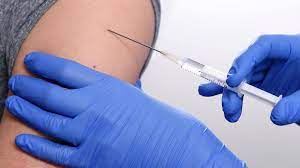Berlin: The northern German maritime state of Bremen has the highest Covid-19 vaccination rate in the country, but has become the hardest hit by the rapid spread of Omicron variants, reported the highest level of infection in Germany.
Experts say that the spikes of Bremen can be active in which the whole German is heading to the future.
The seven-day infection rate in Bremen stands at 800 cases per 100,000 residents on Thursday, the highest in Germany and more than double the national level 303, according to Robert Koch Institute (RKI) for infectious diseases.
“I assume that Bremen is only a little further ahead of other federal countries,” said Hajo Zeeb from the Leibniz Institute for prevention and epidemiological research in Bremen.
He said he expected many German federal countries to report infection rates similar to Bremen in the coming days.
German leaders will discuss how to respond to the Omicron variant then on Friday, with the steps including the shortening of the Covid-19 self isolation period due to fears that critical services can be stopped as a number stopped.
The location of Bremen near the Netherlands and Denmark, where Omicron has become a dominant variant, it could be one reason for the level of higher infection in the state, said Zeeb.
Omicron now accounts for more than 85% of Coronavirus infections in Bremen, far above the national figure of around 44%, according to data from RKI on Thursday.
Also, the success of the city denied most of the residents earlier last year could be another reason.
“You may now be more than a vaccine gap than the others who are a little later (with vaccination),” he said.
Research has shown that protection against Omicron decreases for several months and increases again after a booster shot.
Nearly 84% of the population in Bremen, the smallest of 16 German federal countries with less than 700,000 people, double vaccinated, compared to national figures around 72%. About 44% have received booster shots, compared to 42% nationally.
Bremen is also a rather accurate representation of actual figures in Germany because there is no slow Coronavirus test during the holiday season as happens in many other areas, Zeeb added.
Last week, Germany Minister Karl Lauterbach said the number of new cases had been reported and the actual level of infection was around two or three times higher than the number reported officially.
The state government on Thursday introduced further restrictions to curb infection, including requiring negative quick tests or proof of booster shots to enter restaurants or cultural events, in addition to proving double vaccination.
Apart from the record rate of infection in Bremen, the State Hospital was not burdened because they were in the first three waves of pandemic when patients infected with new variants came with lighter symptoms, Lukas Fuhrmann said, Bremen health senate spokesman.
The doctor said the situation in the hospital however soon deteriorated and that the non-intensive care unit had been burdened with patients with lighter lung symptoms.
The city of the seven days inpatient in Bremen was 13.6 cases per 100,000 people on Thursday, three national incidence of around 3.
